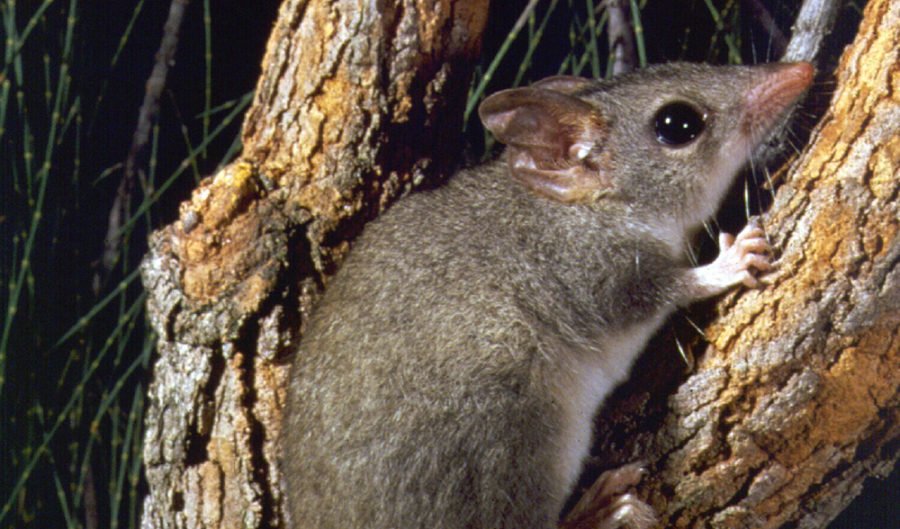The Aussie animals that mate themselves to death

THE SOUTH WEST community of Western Australia has been abuzz after locals have spotted brush-tailed phascogales – a tree-dwelling, insectivorous marsupial – in their backyards in recent weeks.
The vulnerable species belongs to the Dasyurid family – carnivorous and insectivorous marsupials – and is rarely seen throughout its south west distribution due to its arboreal nature, along with declines in numbers attributed to habitat loss, fragmentation and introduced predators.
However, recent posts on social media have sparked conversation about the small mammals – known also by their Noongar name Wambengers – and their interesting lifestyle.
While females can live up to three years of age, males live no longer than 12 months, the last few weeks of which they stop all food consumption and put all of their focus into finding females to breed with – essentially mating themselves to death.
“It’s an absolute phenomenon – there are no survivors,” explains Dr Tony Friend, a Parks and Wildlife principal research scientist.
“In the wild, they just stop feeding and all of their behavioural and physiological energy goes into mating – to the point that there are hormonal changes that actually start organ breakdown,” he says.
Perth Zoo nocturnal house keeper Leanne Kelman says during this time there is a high level of testosterone in their systems. “They’re basically exhausted,” she says, adding, “they don’t really give up.”
Death for the greater good
Although unconventional, this unusual mating frenzy – which is also employed by Australia’s 12 species of antechinus and the red-tailed phascogale found in WA’s south east – has a purpose.
“Litters include multiple paternity and there’s work showing that there’s benefits in that – there’s better survival of young,” Tony says.
Leanne says it also allows the females and young to have more resources once the litters are born, the males no longer competing for food and shelter.
Neighbourhood watch: fatigued phascogales
While females have a home range between 20-70ha, males’ home ranges can reach 100ha, expanding further during their May-July breeding season in their quest to mate with as many females as possible.
Tony says during this time it is not surprising they end up in people’s backyards, having died naturally or been brought home by domestic cats, which prey on them more easily in their weakened state.
“They do tend to move outside of their home range when they’re about to die,” he says, adding, “they get very ratty-looking, even their fur loses its condition.”
In the south west of Western Australia, Brush-tailed phascogales are likely to be found from Bunbury to Margaret River, while their red-tailed relatives are distributed east throughout the wheatbelt from Brookton to Wagin.
Dalyellup resident Phil Harbour, president of the past Friends of Dalyellup Bushland group, says he has seen a number of phascogales over the years – alive and dead.
“In 2001, I was driving out to see our bush block when I came across a phascogale lying on the road,” Phil recalls. “I didn’t quite know what it was, so I took a photo of it and sent it to the South West Environment Centre – that was my first interaction with a phascogale.”
However more recently, Phil posted a photograph of a dead specimen – which he believes to be a result of cat predation – found to the east of Dalyellup in the Banksia woodland and Tuart forrest transition area, and other locals who had seen the elusive marsupials were quick to comment.

Dead brush-tailed phascogale. (Image: Phil Harbour).
“I had people contacting me saying they’d found them running along their fences, in their swimming pools and dead in their backyards,” Phil says.
Reporting sightings
While deaths of male phascogales can at times be attributed to this “die-off,” it is likely dead phascogales found in yards during other parts of the year are due to cat predation.
Tony says it’s important to report any sightings to the local DPAW office – which may want to collect deceased specimens or need photographs of the animal – as each sighting is mapped on a database, giving scientists a clearer picture of their current range.
Leanne says the information is also important in determining the timing of mating and breeding in certain populations.
“It’s interesting to know when they are dying off, to see whether there was a late breeding season or not,” she explains.
For people who may come across a phascogale, Leanne says the easiest way to identify them is by their big brush-tail, large eyes and (if deceased and safe to check) their sharp teeth.
Males can also be identified by a large scent gland on their chest, producing a strong smell, while females found near breeding season will have an open pouch on their underside.

